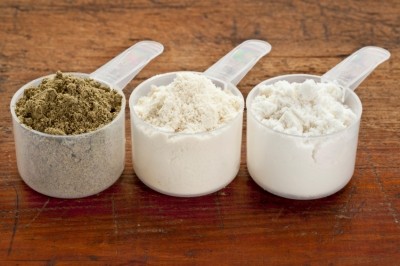Age is just a number: Huge potential for protein in aging market, says DuPont

By 2020, consumers aged 65+ will be 56 million strong, accounting for roughly 17% of the US population, according to Packaged Facts. And while food and beverage marketers likely understand the potential of the aging market, they could be missing out by not properly segmenting this growing population, according to DuPont Nutrition & Health.
“Today many beverages are focused on general health and wellness or the elderly population that needs a supplement in beverage format,” Megan DeStefano, global strategic marketing manager, DuPont Nutrition & Health, told FoodNavigator-USA. “Our research indicates there is a group of busy, active, aging consumers that are interested in certain health benefits—like hearth health or immune health. By targeting some of these health areas of interest, beverage marketers could reach an even broader audience of aging consumers.”
Aging is changing
Indeed, DuPont’s consumer research has revealed that as people age, they believe they should up their intake of protein, though most prefer to get it from food and beverage sources as opposed to taking protein supplements.
In this way, aging consumers aren’t so different from younger demographics, DeStefano noted. That, and lengthening average lifespans (and increased activity levels for many older consumers) means for many people, age is just a number.
“In many ways, older consumers are not different from other consumers. Aging is changing and that’s really blurring the lines on how someone acts or what they want based on age alone,” DeStefano said. She cited recent consumer surveys in which DuPont segmented consumers based first on need, then on age.
“What we found is that aging consumers—like many—are really looking for sustained energy and they believe protein helps give them increased, better energy. They also do have some key areas of concerns like heart health and immunity. If you can build and position a product that supports more energy and supports one of the health concerns they have, then it could be a big hit.”
Still with age comes with certain more specific health concerns—among them sarcopenia, or loss of skeletal muscle, which occurs at a rate of roughly 3 to 8% per decade after the age of 30 and increases with age. It can lead to increased risk of falls, fractures and impair the ability to carry out routine tasks, leading to a loss of independence.
While exercise can help prevent or delay sarcopenia, it’s often not enough for elderly consumers, DeStefano said. “The muscle’s ability to respond to exercise is reduced in elderly, in comparison with younger adults,” she noted. “Essential amino acids, which can be obtained through consumption of sources of dietary protein, have been shown to elicit a muscle response in both young and old subjects, when sufficient amounts are ingested.”
What type of protein? A balance
Although more and more consumers are seeking out protein inclusion on product labels, most don’t distinguish among protein types, DeStefano noted. Moreover, for most adults, regardless of age, a mix of high-quality plant and animal proteins tends to be the best. This is particularly true for manufacturers looking to optimize a product for leucine content, the branched chain amino acid that has been shown to trigger muscle protein synthesis (see here), she said.
“Research suggests that 25 to 30 grams of high quality protein at each meal helps promote optimal muscle protein synthesis, as well as to ensure adequate intake of the essential amino acid leucine, which plays a critical role in building muscle,” DeStefano said. “For example, a blend of soy, dairy and whey protein provides high-quality protein that can be optimized to meet the leucine threshold.”
But in some formulations, certain protein types work better than others. For example, soy is the only widely available plant-based source that is a complete protein, making it ideal for beverage formulations, she said. Not only that, but soy remains one of only a few food components shown in clinical studies to reduce blood cholesterol, a recognized risk factor for cardiovascular disease, when incorporated into diets low in cholesterol and saturated fat. (See here and here.)
Age also comes into play in formulation, particularly when it comes to protein-rich beverages for very elderly consumers, among whom consistency becomes increasingly important.
“As some consumers get older, swallowing may be more challenging so you have to find a good balance between high protein and consistency,” she said. “With the right selection of protein, a formulator can create a thin juice-like product or a thicker product that could ideally serve the dysphasia market.”











